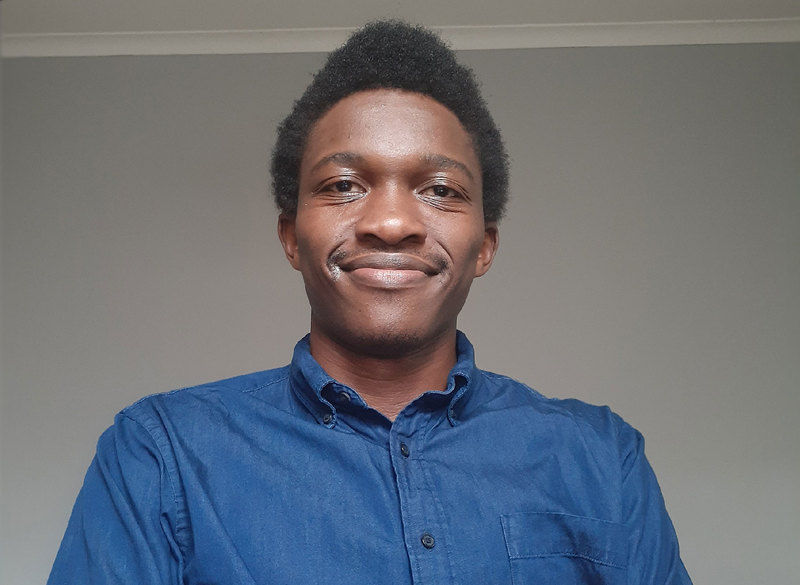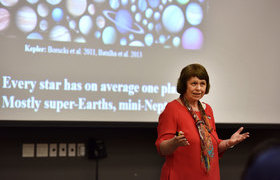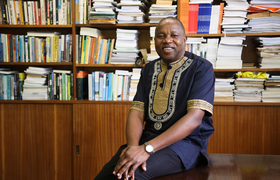Simulated satellite camera to aid vegetation monitoring in SA
10 May 2021 | Story Niémah Davids. Photo Supplied. Read time 5 min.
A master’s student from the University of Cape Town’s (UCT) SpaceLab, whose dissertation focuses on how a simulated satellite can aid vegetation monitoring in South Africa, was handpicked to present his paper at the 2021 SpaceOps Conference, the 16th International Conference on Space Operations held virtually last week.
Brendon Maongera is completing his master’s in space studies in UCT’s Faculty of Engineering and the Built Environment. His paper, South African Satellite Operations Testbench for Capacity Building in Space Operations Training and Research, became the focal point during an afternoon session at the conference. The annual event attracts space operations enthusiasts from around the world and provides a platform for robust discussions on state-of-the-art [space] operations principles, methods and tools.
“I am delighted that I was afforded the opportunity to share my research with delegates who work in the space industry and to engage with various people on the importance of capacity building in this industry in South Africa,” he said.
“I am disappointed that all of this could not be done in person though. It would’ve allowed me time to engage a lot more and to increase exposure, especially with prospective partners.”
The project was sponsored by the University of Stuttgart in Germany in partnership with Airbus Defence and Space, an organisation responsible for producing defence and aerospace products and services; Terma, a Danish defence and aerospace manufacturer; and Cobham Gaisler, a global leader in embedded computer systems used in harsh environments.
UCT News sat down with Maongera for some insight into his research.
The paper in brief
Maongera said his research focused on building a simulated satellite camera and assessing and monitoring its effectiveness using a testbench – a special station developed to test a mechanism using software and hardware tools.
He explained that his objective was to demonstrate the benefits of using a replicated satellite for capacity building, and to showcase how it can help South Africa reach its vegetation monitoring goals. He said using remote sensing (scanning the earth by satellite or using a high-flying aircraft to obtain information) is essential for vegetation monitoring.
“My first big challenge was learning how the satellite testbench operates and how the different components interact with each other in order to simulate a satellite.”
He aimed to prove that the same techniques used to fly a simulated satellite can be replicated and used to operate an actual satellite in space. This, he explained, means that while students learn to operate an actual satellite, they will also learn how to operate a replicated version thereof – the same principles apply.
Maongera’s simulated satellite was flown over the Cape Peninsula.
Another part of his research was to highlight the critical role onboard computers and onboard software play in order to streamline operations and to reach a desired goal, especially for emerging space nations like South Africa.
It wasn’t all smooth sailing, though. “My first big challenge was learning how the satellite testbench operates and how the different components interact with each other in order to simulate a satellite. I also had to learn how to create commands to send to the satellite for it to operate effectively, and this was hard.
“Lastly, learning how to actually simulate the satellite camera with a satellite, command it and apply those skills to help me obtain useful data was a tough nut to crack,” he said.
Benefits for SA and Africa
Develop, build and operate your own satellites – it’s possible. This process, he said, will add to the list of advantages that come with using space applications in ways that have “never been thought of before”, to help solve some of the continent’s challenges.
More than that, he said, it offers students the opportunity to learn special skills like spacecraft modelling and satellite operations, and also teaches them how to use the actual satellite software currently being used in the space industry.
“These satellites could potentially be used for the next generation of African Resource Management Constellation.”
“The testbench can also help students collaborate with other students from different universities who may have similar testbenches. This will help us with new research on space that is likely to benefit our country, our continent and the world,” he said.
Maongera said going forward, he hopes to include more students to help him develop, build, replicate and control their own satellites. But he can’t do it alone. He needs the local space industry, academia and the South African National Space Agency to come on board.
“These satellites could potentially be used for the next generation of African Resource Management constellation.
“I am so proud that the SpaceLab has given me the opportunity to prove my theory. I so look forward to what comes next with all this new data; it’s going to be epic,” he said.
 This work is licensed under a Creative Commons Attribution-NoDerivatives 4.0 International License.
This work is licensed under a Creative Commons Attribution-NoDerivatives 4.0 International License.
Please view the republishing articles page for more information.










